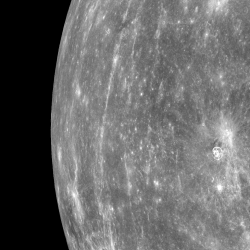Three to two. That’s the ratio of the time it takes Mercury to go around the sun (88 days) in relation to its rotation (58 days). This is likely due to the influence of the Sun’s immense gravity on the planet. A new study confirms that finding, while stating something even more interesting: other star systems could see the same type of resonance.
Hundreds of confirmed exoplanets have been found so far, many of them in very tight configurations, the authors said. “Mercury-like states should be common among the hundreds of discovered and confirmed exoplanets, including potentially habitable super-Earths orbiting M-dwarf [red dwarf] stars,” they added. “The results of this investigation provide additional insight into the possibilities of known exoplanets to support extraterrestrial life.”
Habitability, of course, depends on many metrics. What kind of star is in the system, and how stable is it? How far away are the planets from the star? What is the atmosphere of the planet like? And as this study points out, what about if one side of the planet is tidally locked to its star and spends most or all of its time with one side facing the starshine?
Additionally, the study came up with an explanation as to why Mercury remains in a 3:2 orbit in opposition to, say, the Moon, which always has one side facing the Earth. The study took into account factors such as internal friction and a tidal “bulge” that makes Mercury appear slightly misshapen (and which could slow it down even further.) Basically, it has to do with Mercury’s early history.

“Among the implications of the released study are, to name a few, a fast tidal spin-down, a relatively cold (i.e., not fully molten) state of the planet at the early stages of its life, and a possibility that the internal segregation and formation of the massive liquid core happened after Mercury’s capture into the resonance,” the press release added.
The results were presented today (Oct. 7) at the American Astronomical Society department of planetary sciences meeting held in Denver. A press release did not make clear if the study has been submitted for peer review or published.
Source: AAS Division of Planetary Sciences

